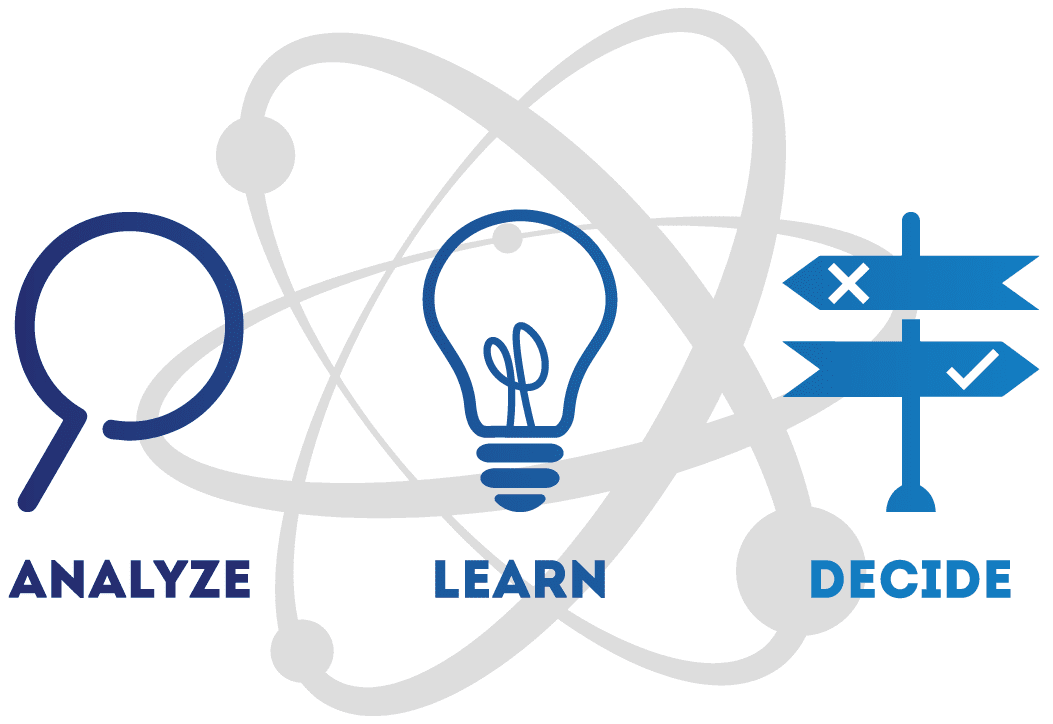The technology sector will continue to see the proliferation of innovative applications, new technologies, and increased functionality expectations from customers. IT leaders are, however, still constrained by widening skill gaps and increasing budget cuts that prevent them from adapting to these challenges while also propelling their digital transformation initiatives.1
To stay ahead of the curve, enterprises must be agile—able to react quickly to shifts in customer expectations—while also seamlessly integrating new, and often more intelligent, platforms into their IT infrastructure. To capitalize on new opportunities, enterprises must be able to scale quickly, efficiently, and with minimal interruptions to operations. This necessary agility, however, is directly proportional to the maturity of IT processes, tools, and skillsets. Consequently, inflexible IT means enterprises are slow to respond to technological changes or shifts in the market, which translates to missed opportunities and, ultimately, stunted growth.
With that in mind, how can businesses ensure that their IT is capable of addressing these challenges?
Evolving IT Operations
To address these challenges and maintain momentum with digital transformation initiatives, businesses need a new, more intelligent IT that is able to generate speed, insight, value, and quality—but with less complexity, cost, and uncertainty.2 So, how do businesses evolve their IT? By leveraging Intelligent Automation (IA) in conjunction with comprehensive data analytics, enterprises can transform their IT into a smarter and dynamic operation. Through this combination, IT becomes capable of readily integrating new technologies, adapting to changing business needs, and enabling efficient scalability without impacting performance speed or incurring significant cost.
Intelligent Automation
IA technology harnesses machine learning to improve performance while also accomplishing tasks faster and more accurately. Unlike traditional automation, IA utilizes the semantic and episodic learning capabilities of Artificial Intelligence to glean a contextual understanding of an IT environment, which enables the platform to not only interpret data, but execute informed solutions while making predictive adjustments as these environments change. In essence, IA analyzes, learns, and makes decisions.

Operational tasks like patch management, release and change execution, application deployment, and service fulfillment could easily consume the vast majority of an IT team’s bandwidth, which prevents them from accommodating technological changes or supporting larger business objectives. With IA, IT personnel spend less time on repeatable tasks that may have previously consumed hours of their time.
The multifaceted, cognitive learning capabilities of IA represents another significant differential for IT leaders. IA’s intelligent monitoring of data traffic ensures that the platform readily flags anomalies, implements solutions when possible, and escalates unknown incidents quickly. If escalation is necessary, the IA platform shadows IT personnel as the incident is remediated to gain an understanding of the issue and creates an automation to prevent the incident from recurring. In this regard, IA dramatically improves resolution accuracy and response time while also significantly cutting incident volume. By clearing the excess noise in a business’ IT environment, IA enables the establishment of clear operational baselines. With IT staff freed from rote operational tasks, IT leaders can reinvest their teams’ energy into critical initiatives that optimize their environments.
Since IA has the elasticity to adapt to changing environments, these platforms enable businesses to respond quickly and seamlessly to evolving tech trends or customer expectations while simultaneously driving operational improvements and furthering digital transformation across the organization. However, IA alone is not a panacea for IT pain-points.
Analytics
When it comes to continuously revitalizing IT operations, data analysis is an irreplaceable component of an effective digital transformation strategy. In the era of Big Data, heaps of event logs or incident reports are not hard to come by, but these logs place no emphasis or prioritization on the events happening throughout an IT environment. Although these event logs contribute to increased visibility throughout an IT environment, the volume of data is meaningless unless it can be analyzed and applied to improvement strategies.
Analytic tools pull this aggregated log information and organize the data categorically, historically, procedurally, and by technology. For example, an analytics tool turns an event log of 100 incidents into a data set of 90 password reset tickets, 7 authentication errors, and 3 critical server failures. This enables IT personnel to more readily interpret the volume of information, gain a contextual understanding of incident trends, and implement processes to reduce incident volume. Adopting IA, however, will take this process a step further.
IA platforms are equipped with intelligent monitoring and event logging capabilities that feed built-in reporting features. These features enable businesses to significantly reduce the time and labor needed to pull and consolidate data while also ensuring that the data gathered is valuable and actionable. More importantly, IA automatically analyzes incident trends and implements automated solutions. In the example described above, IA would log the events, analyze the nature of the incidents, and implement an automated solution for password resets—resulting in a dramatic reduction in ticket volume. With those incidents remediated, IT personnel are free to focus on incidents like the critical server failures that are detrimental to the entire organization. With IA bearing the brunt of incident management, IT teams are able to improve service quality and delivery, bolster security, and drive process optimization. By bridging IA with their IT personnel’s skill sets, businesses develop their IT environments into a methodical, reliable, and intelligent operation that is capable of exceeding operational expectations without shouldering additional overhead costs.
The Benefits of Intelligent IT
Enterprises that leverage IA will experience the following benefits:
Higher performance without sacrificing quality
Intelligent monitoring and automated incident resolution ensure that critical IT infrastructure is always operating at peak performance, reducing costly business interruptions. Regardless of fluctuating IT budgets, IA can easily adapt to increased performance demands and customer expectations without compromising service quality.
Evolving security control
IA’s threat monitoring, predictive analysis, and intelligent escalation capabilities enable businesses to maintain consistent control over their security protocols, which goes a long way to preventing damaging data breaches.
Lower costs
Businesses leveraging IA can expect total cost reductions to range from 26-66 percent, with 14-28 percent of the total savings directly attributable to automation.3 Essentially, IA empowers businesses to accomplish more without incurring significant expenses.
Improved productivity
IA significantly reduces ticket volume for lower-level incidents while enabling IT personnel to focus more time on critical issues. This combination ensures that incidents are managed quickly and efficiently, with minimal impact on the user. More so, IA’s integration with Service Desk improves resolution accuracy while simultaneously cutting time to resolution, and reducing lengthy interruptions to employee productivity.
Preventative methodologies
By gaining insight into regular incident patterns in a business’ IT infrastructure, IA can push proactive incident management into the realm of predictive analysis. With less time spent on solving individual problems, IT teams are empowered to identify and resolve incidents before they manifest.
Increased job satisfaction
By augmenting IT teams with IA platforms, businesses are able to reinvest their personnel’s time into more creative and higher-priority endeavors. This enables IT staff to cultivate new and beneficial skills and contribute more directly to the success of the business.
Building the Foundation for Intelligent IT
Although the conversation around digital transformation has been happening for several years, enterprises are hoping to make significant strides along this journey throughout the year. In order to prepare for technological advancement and burgeoning markets, businesses need to ensure that their IT infrastructure is at its best. For many companies, IT outsourcing remains the primary methodology for bolstering IT performance while also reducing overhead. This approach, however, presents two significant risks:
- Hidden Costs: Although outsourcing potentially cuts costs by providing a fixed-fee service, this service can be rigid. If a business starts to experience rapid growth or requires significant services beyond the initial engagement, the cost-saving benefits of IT outsourcing can rapidly compound.
- Compromised Security: More importantly, outsourcing critical IT functions dramatically increases the likelihood of security breaches. Although there were over 1,000 major security breaches in 2016, the frequency of cyber attacks has doubled in 2017—and the rate of these breaches is expected to significantly increase.4 With more IT services managed offshore, businesses have less direct oversight on critical security applications.
By making IT smarter and more agile through the implementation of IA and consistent data analysis, enterprises can advance their digital transformation initiatives and readily capitalize on new opportunities. But implementing IA successfully is no small feat. Before IT infrastructure can be augmented with IA, businesses need to ensure that their core fundamentals are in place. To learn more about these core fundamentals, read our blog on enabling digital transformation.
1 Achieving High Performance with Application Outsourcing
2 Ibid
3 Ibid
4 Cyber-attack Volume Doubled in First Half of 2017
”




